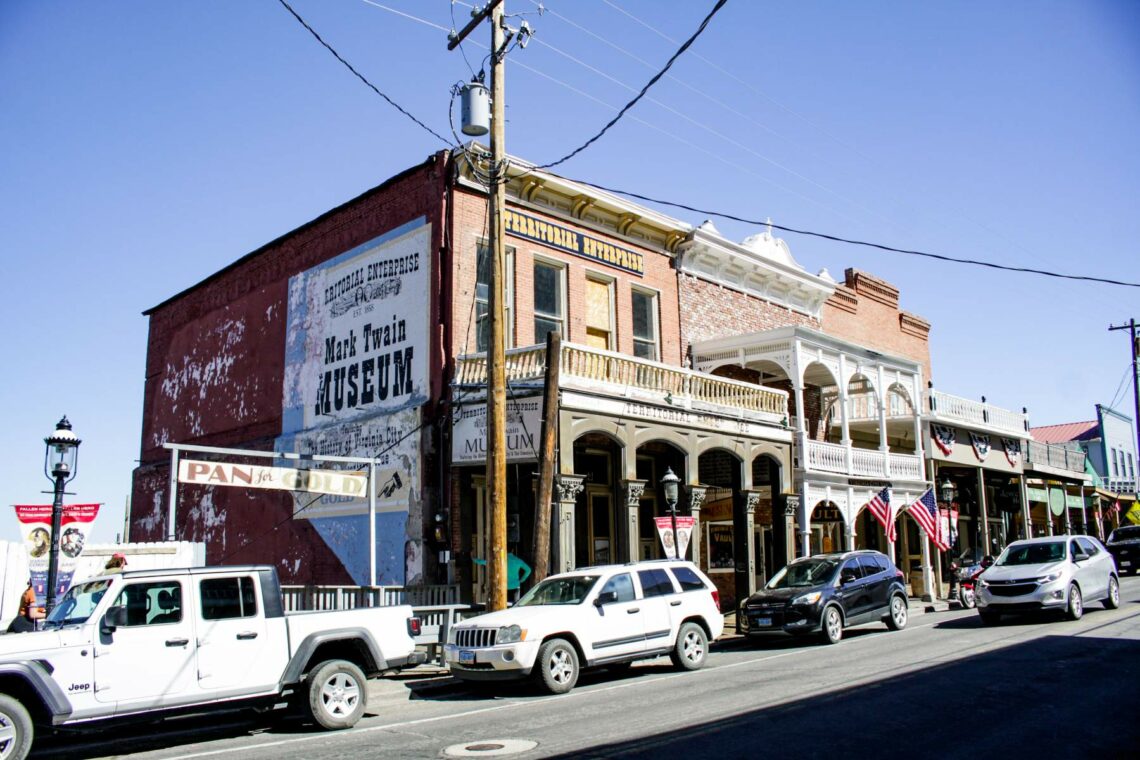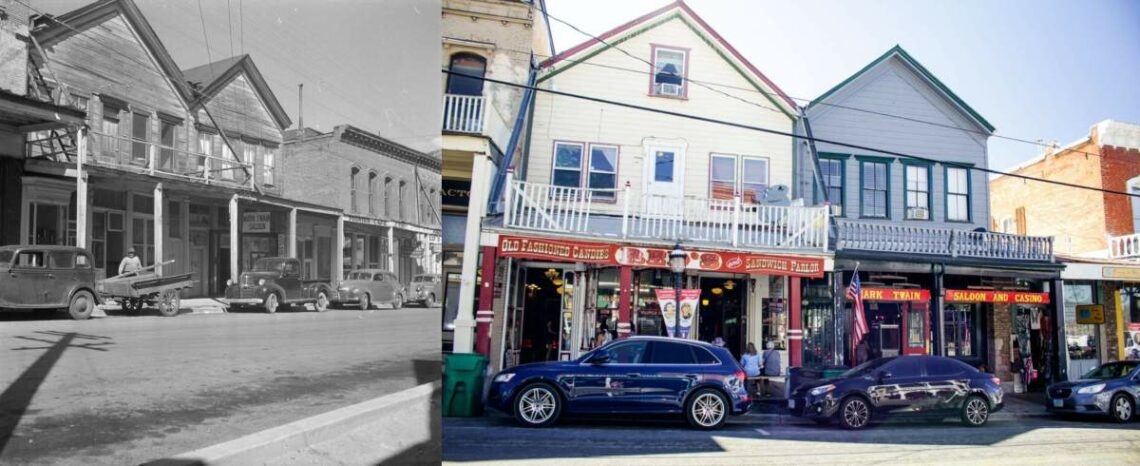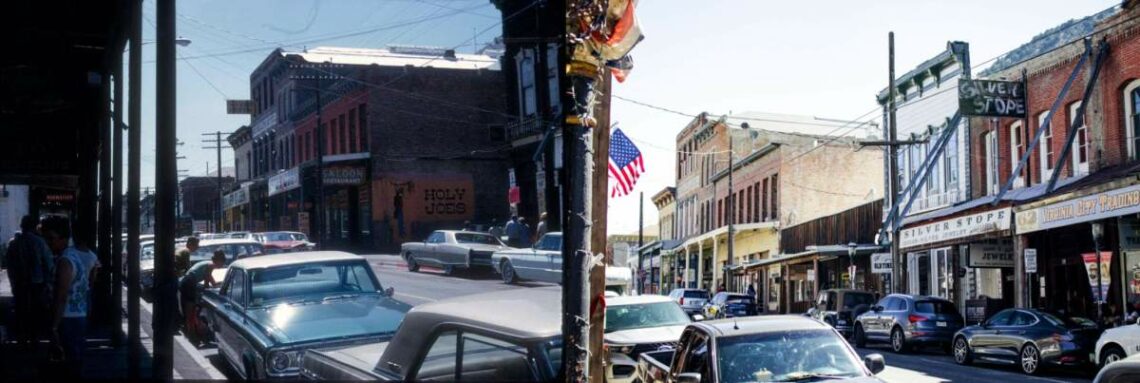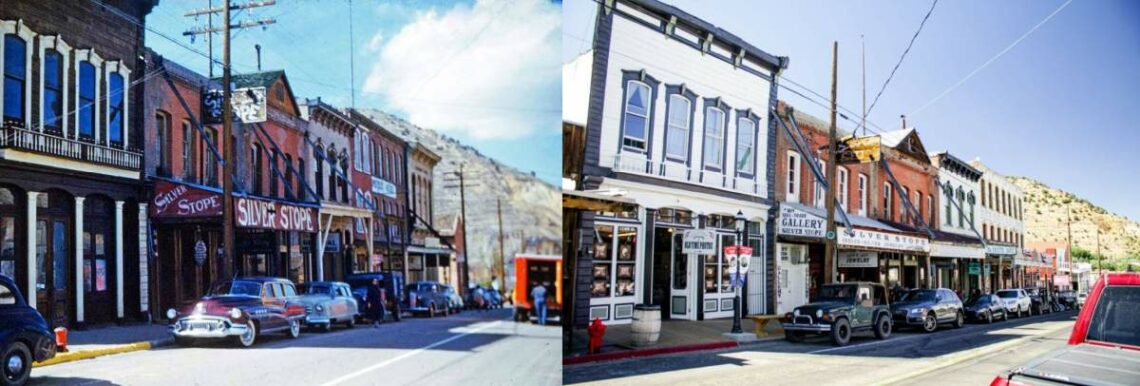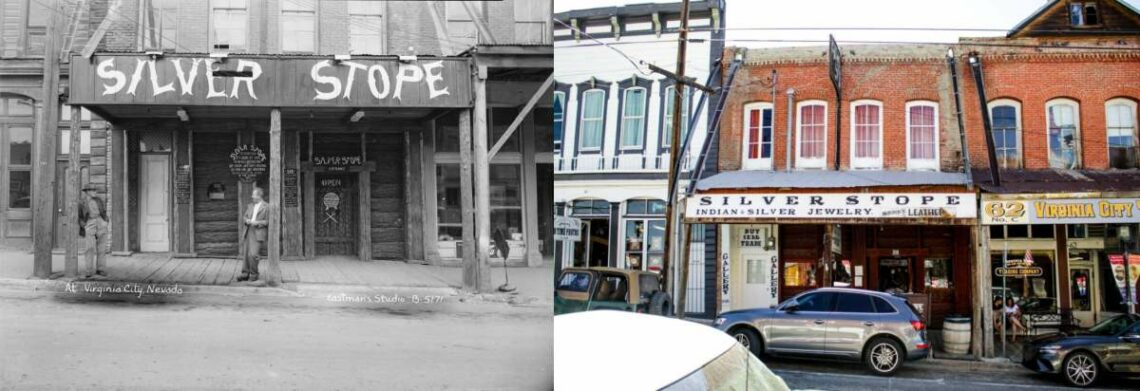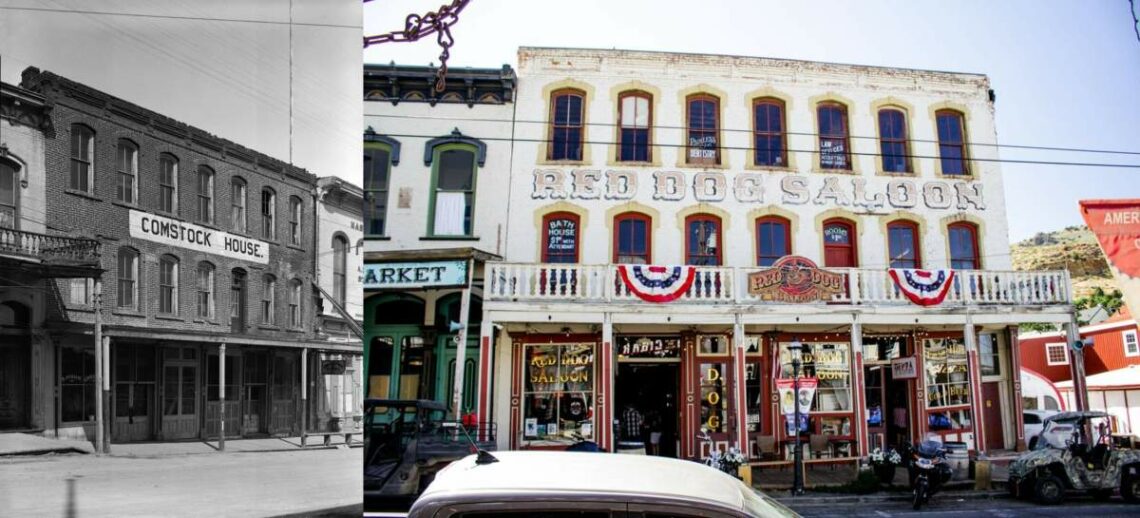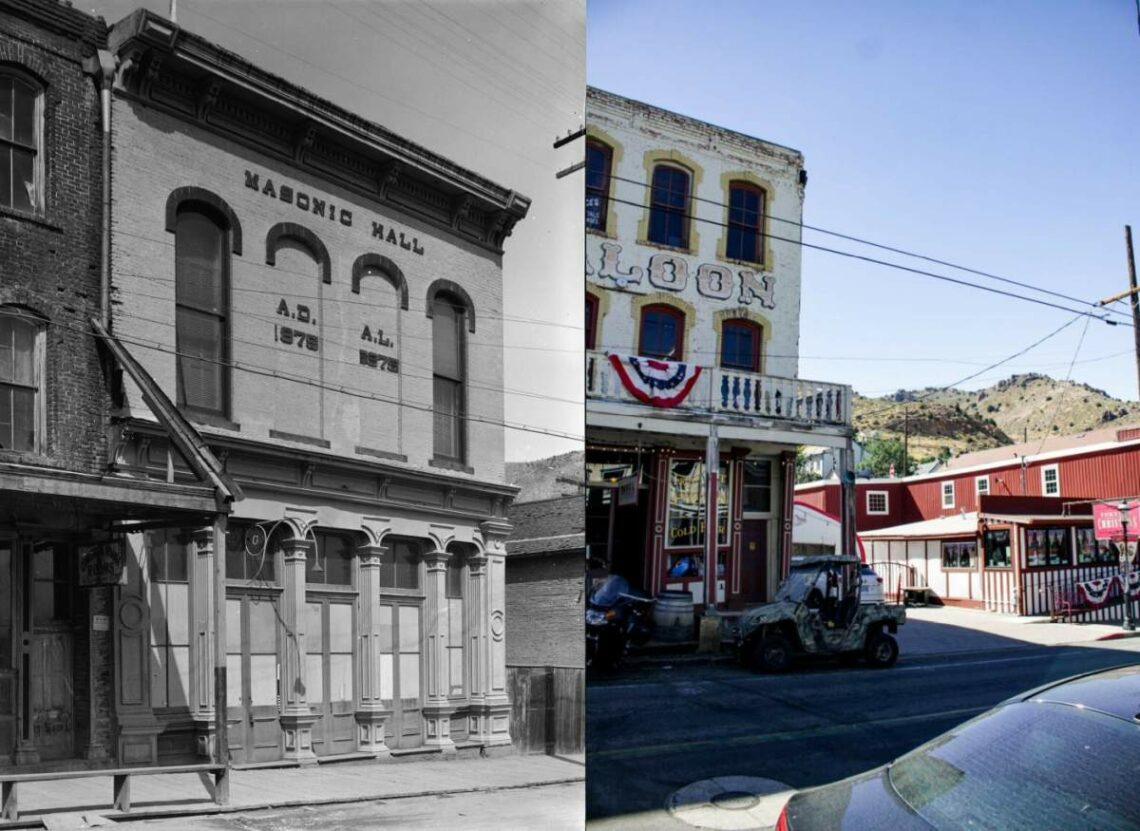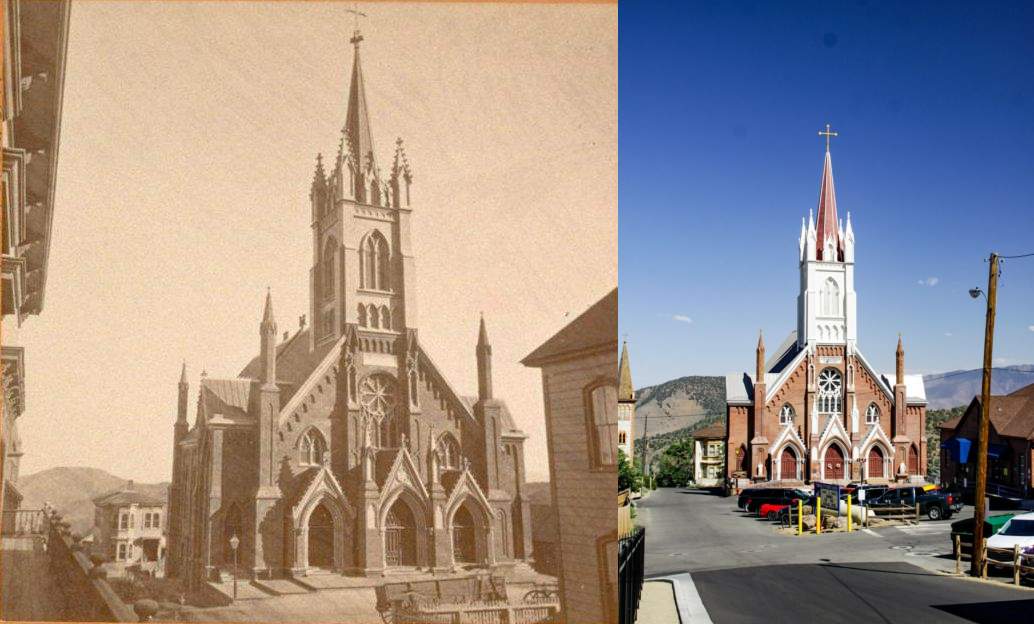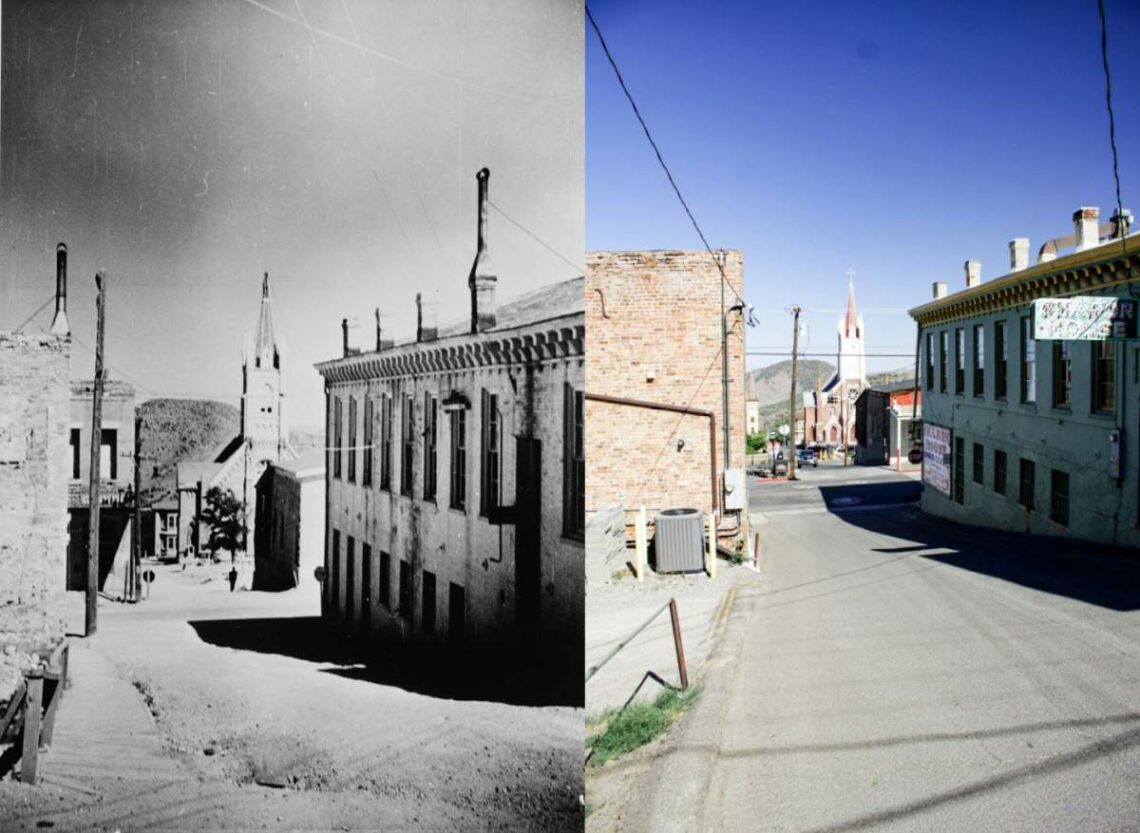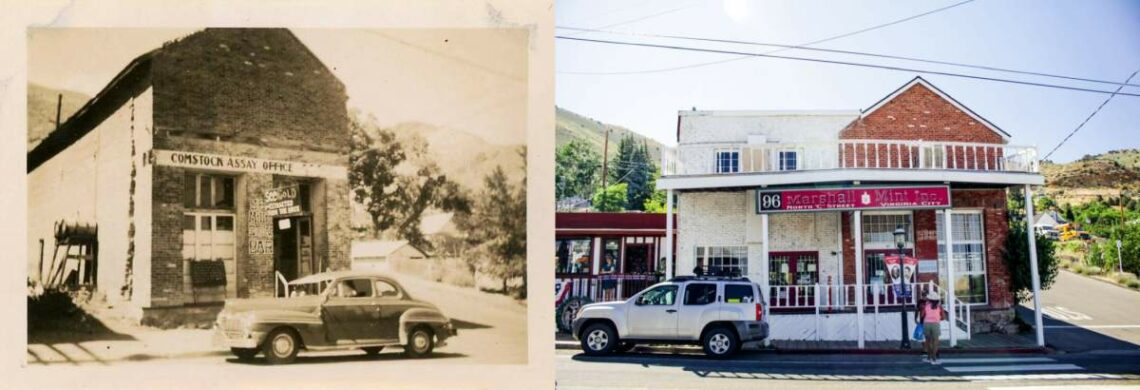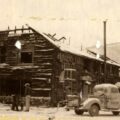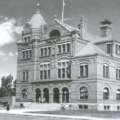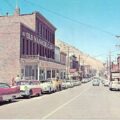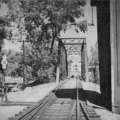We’re back with another look at the then-and-now views of Virginia City.
The Mark Twain Saloon is featured in a lot of these photos. Back in the mid 20th century, like now, Mark Twain was a major celebrity up on the Comstock. The author only lived in Nevada for 3 years, but Virginia City is where he started his career as a writer and first published under the name Mark Twain. As a result, when Virginia City was first being pushed as a tourist destination, it was heralded as the home of Mark Twain. This saloon was one of the places that used the name to drum up business. It is still there today at 62 South C Street.
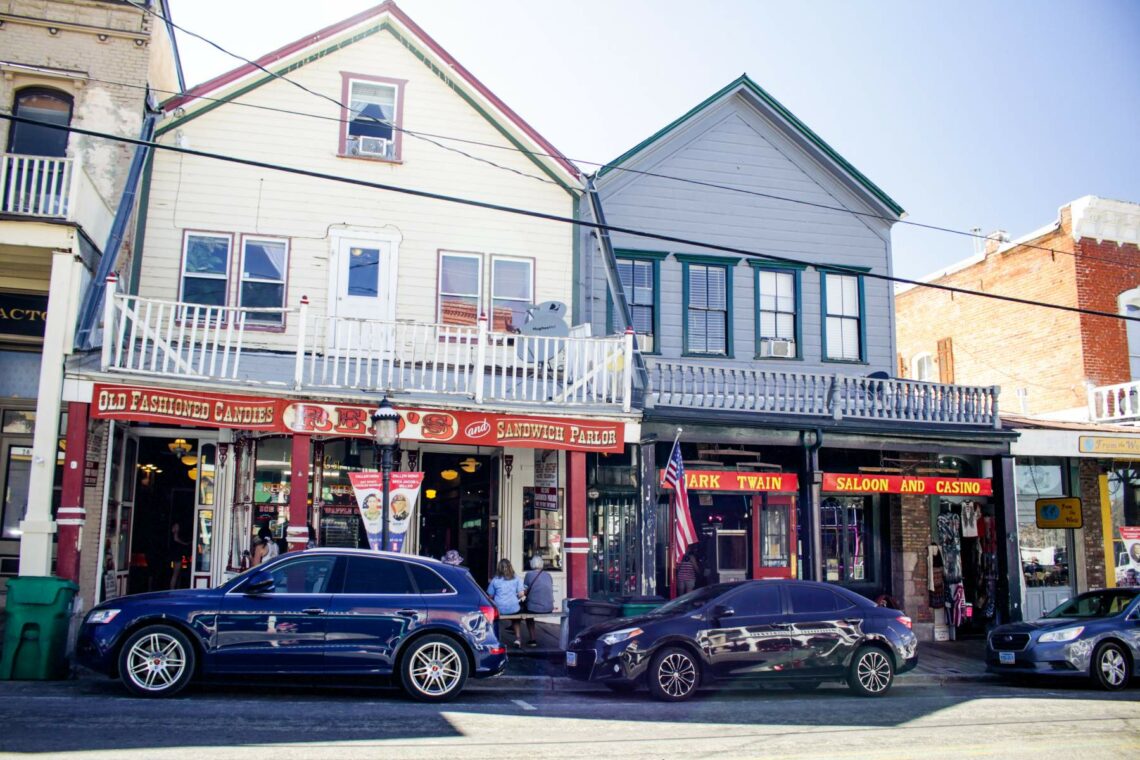
Last time, we looked at a whole block of buildings at the south end of downtown that have all been demolished. Some of those buildings were substantial brick buildings that were once prominent establishments in town. But some are forgotten, with only a couple of photos remaining to show that they existed. This little wooden building was right across the street from the Presbyterian Church. Probably a boarding house of some kind. By the early 1930s when this group visited, it was leaning and falling apart, making a perfect backdrop to their “ghost town” vacation. By the end of the 1930s, the building was gone. Soon after, the brick buildings to the left were also gone. Now this is the site of the Storey County Sheriff’s Office.
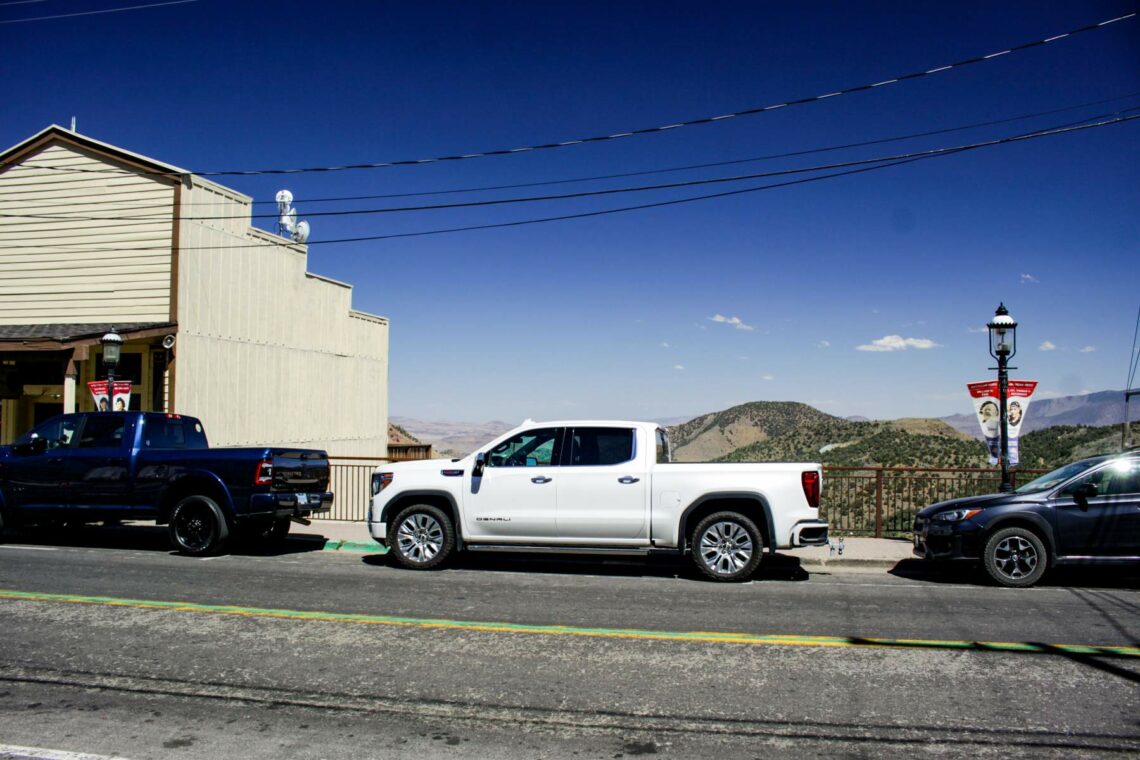
The buildings at the north end of downtown have fared better. They have been preserved over the decades, though the occupants of most of them have changed over time. Here is a view looking south at some of them. Prominent at the center of the photo is Holy Joe’s Saloon, with a hanged man painted on the side. This was also later known as Charles Stone’s Saloon, still keeping the hanged man. This place didn’t last as a saloon; it’s now the Barrels O’ Candy store. The empty lot next door, where the hanged man was painted, is now home of the Virginia City Mall.
To the left of Holy Joe’s is the Silver Queen Hotel, one of the establishments that has survived since the early tourist days.
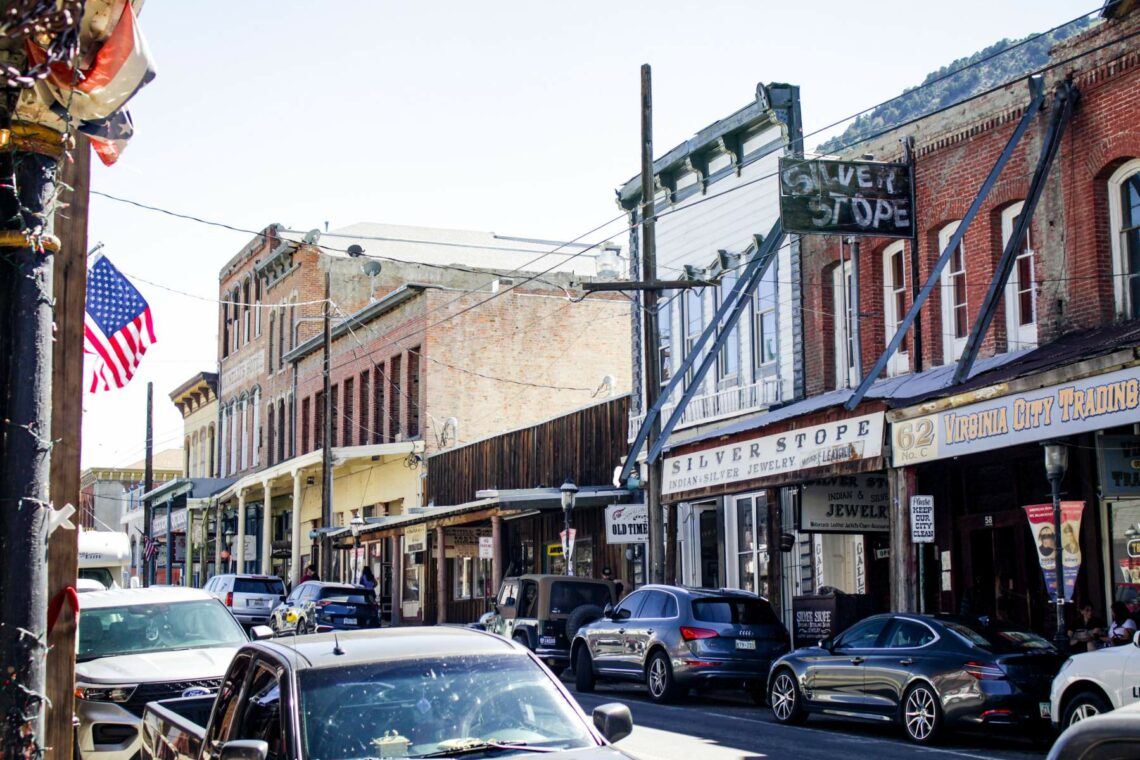
Looking in the other direction, we see the shops that were north of Holy Joe’s. The most prominent one is the Silver Stope. This is another establishment that has been around since the 1940s.
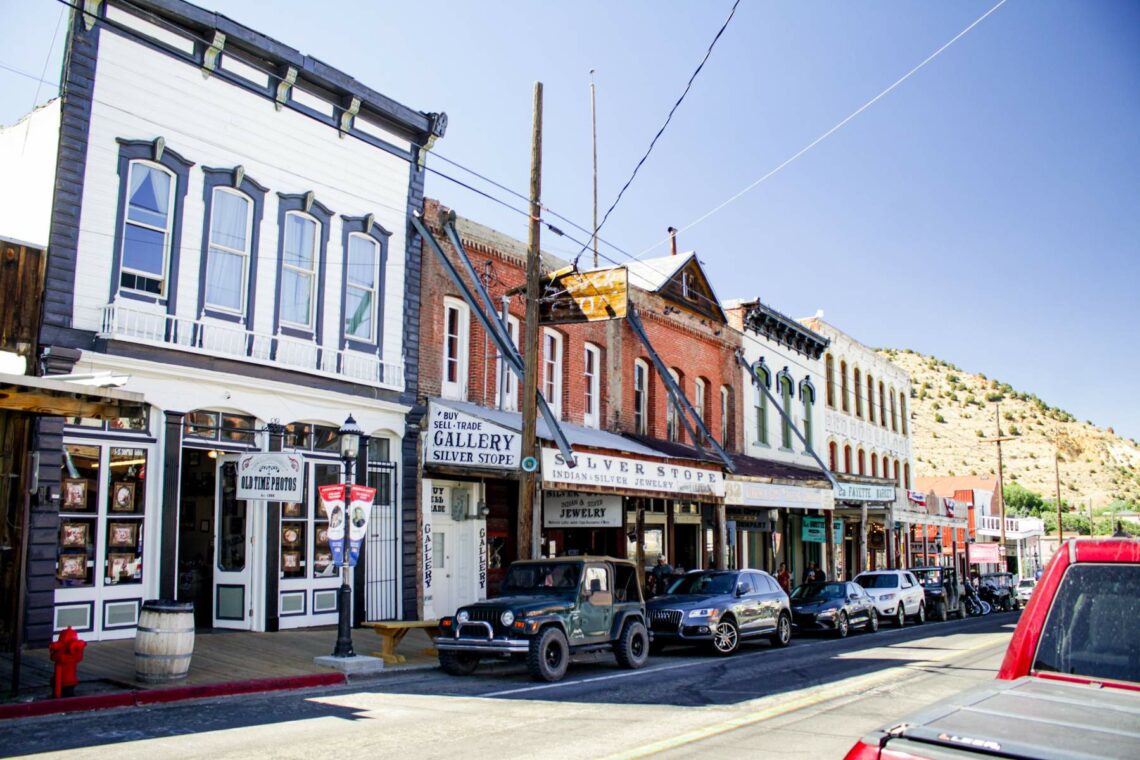
The Silver Stope was notable enough to get its own featured postcards.
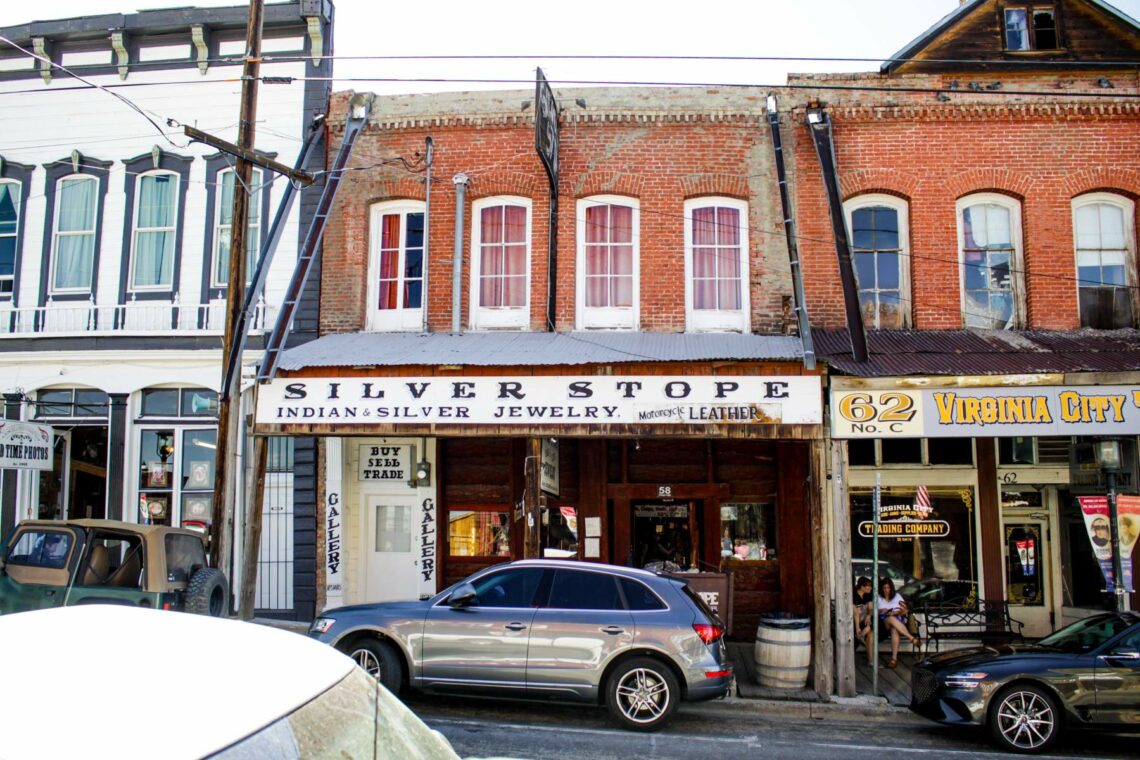
The Comstock House was a hotel that had been around since the boom days of Virginia City. Named after the Comstock Lode that the town sat upon, which itself was named after Henry Comstock, one of the earliest miners in the area. The hotel tried to tie itself through its name to the region’s deep history, but by the 1930s it was just as desolate as everything else in town.
In the 1960s, as tourist traffic to Virginia City was increasing, some out of towners bought the old Comstock House and renamed it the Red Dog Saloon. They brought up bands from San Francisco to play here at concerts where LSD was passed around freely. Thus the Red Dog, and Virginia City, played an early part in the 1960s psychedelic music scene. It’s been through several owners since and changed names a couple of times, but it is again open as the Red Dog serving up live music and pizza.
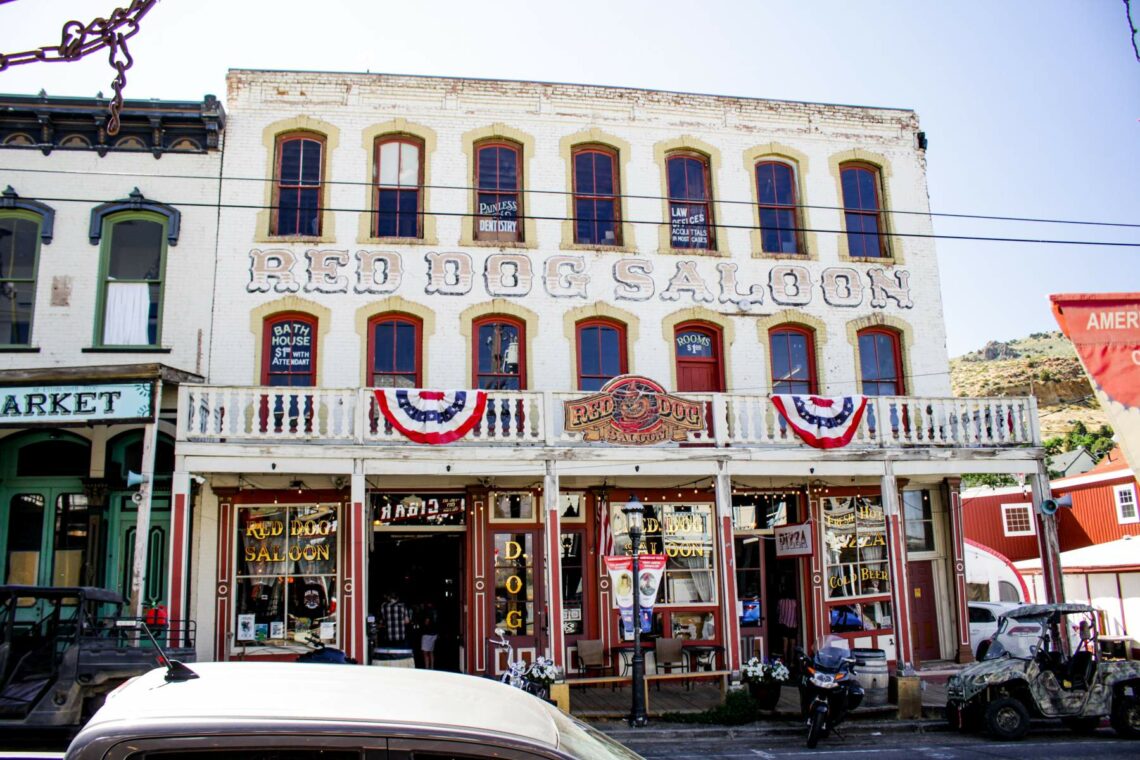
Next door to the Comstock House was the Virginia City Masonic Hall. All these brick buildings were built in 1875 following the Great Fire that year that burned through much of downtown. The Masonic Hall did not fare as well as the Comstock House. It was torn down, and now serves as parking and outdoor seating for the Red Dog.
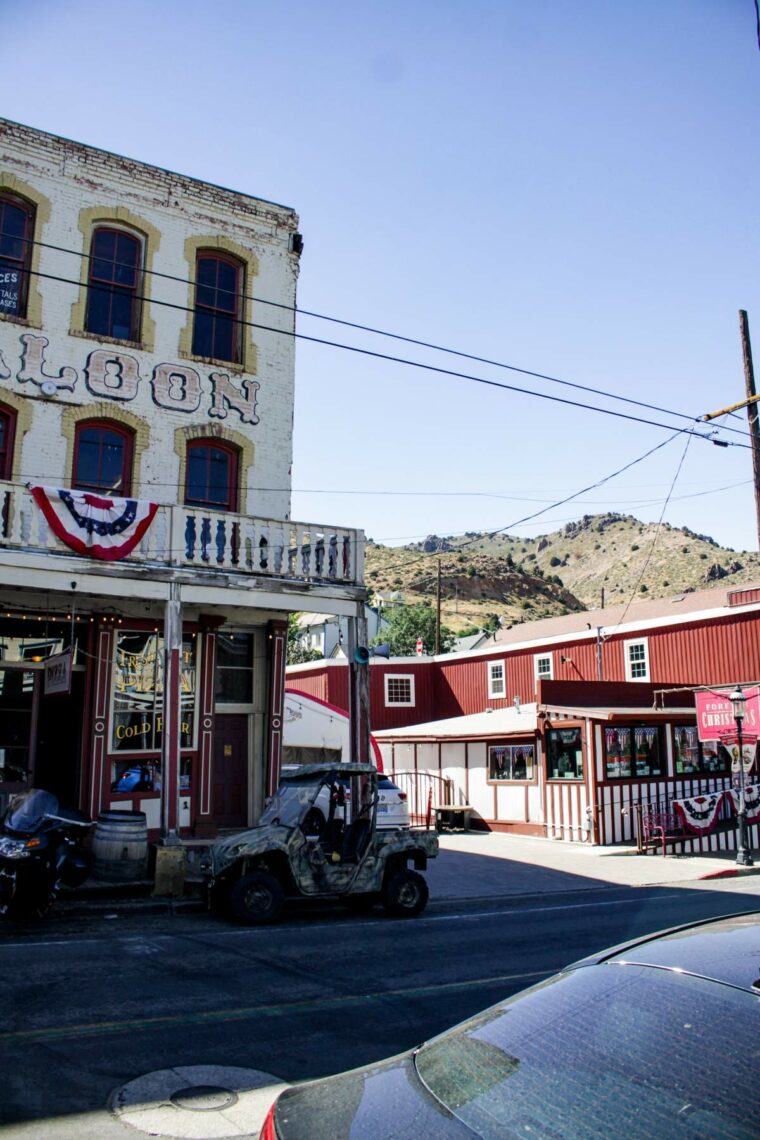
One of the enduring landmarks of Virginia City is St. Mary’s in the Mountains Catholic Church. Also built after the Great Fire of 1875, this Carleton Watkins photo shows it soon after its construction. It has been preserved beautifully and looks identical today.
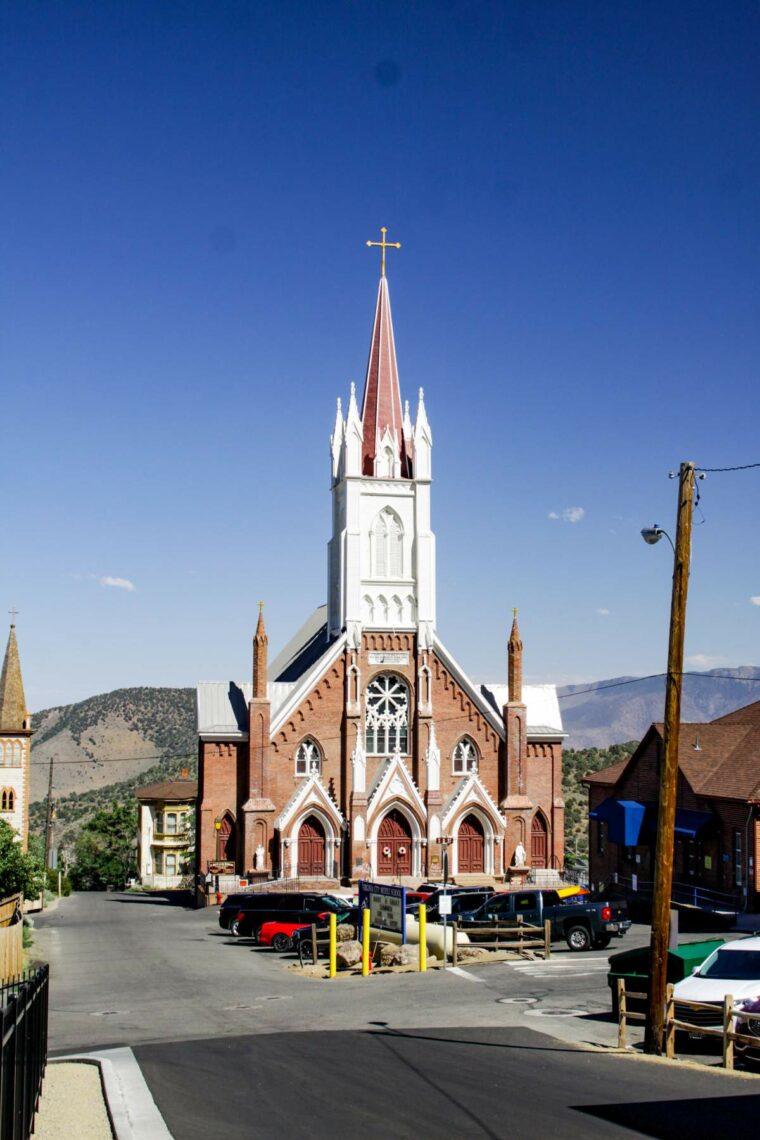
From a couple of blocks away, we look at at St. Mary’s Church from the corner of Taylor and B Streets. The buildings of Taylor Street form a canyon here, with the Bank of California on the right and the Crystal Bar on the left. On the opposite side of C Street on the left is the Black & Howell Building, the only building in the photo that hasn’t survived to the present day.
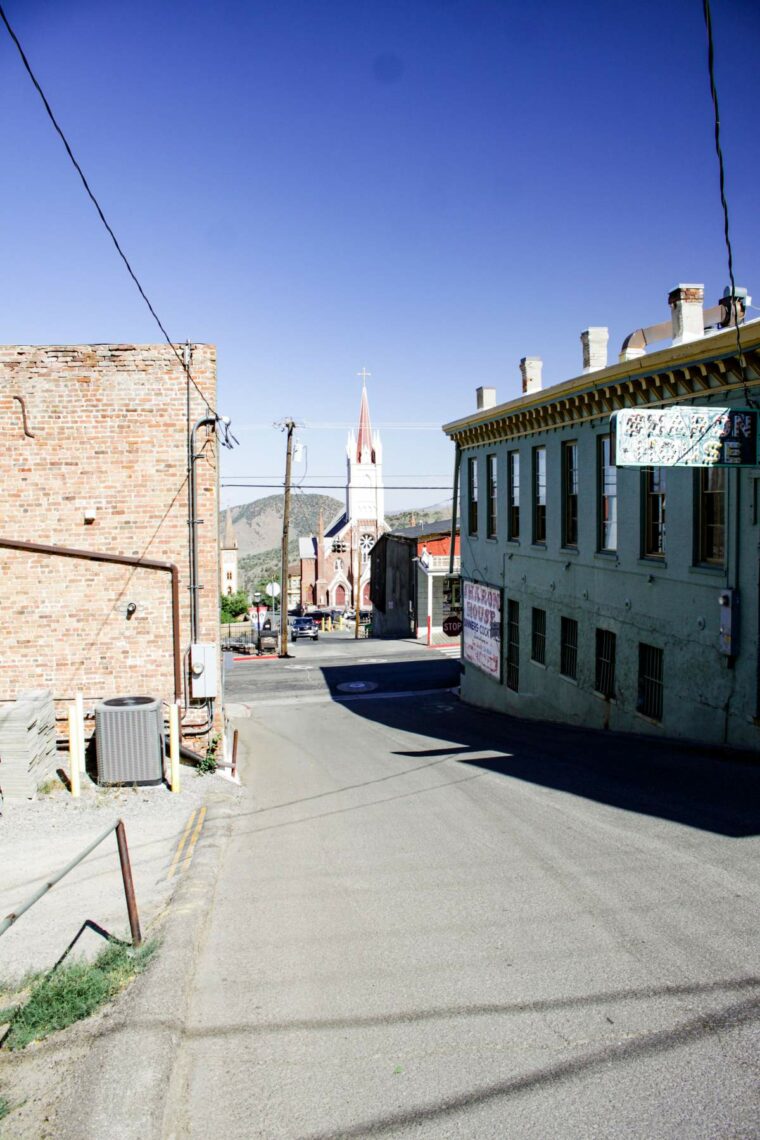
At the corner of C and Sutton Streets is the Comstock Assay Office, another popular subject for postcards. It’s since been expanded and is now home to the Marshall Mint.
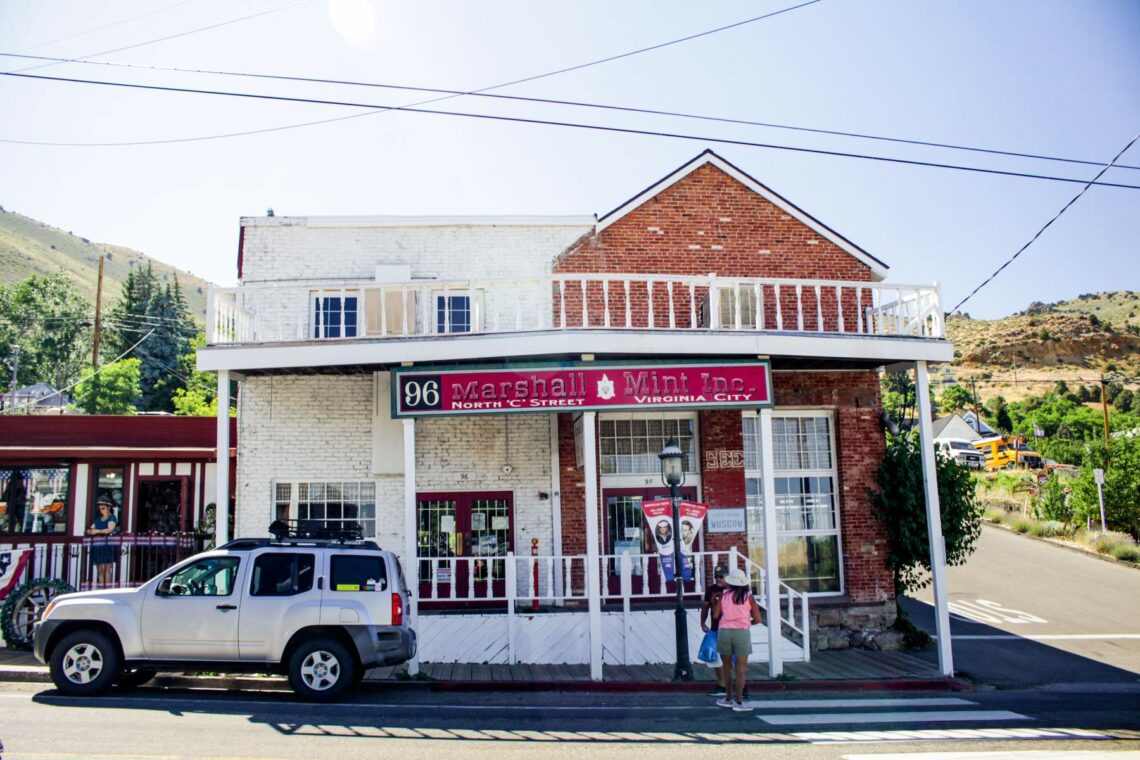
Earlier in this post we mentioned the Silver Queen Hotel. This building was originally known as Molinelli’s Hotel, and the sign proclaiming it as such is still visible upon the facade. In the 1930s it was operating as the Hotel Carney. For a period it was also known as the Brass Rail, before that establishment moved down the street. It has been the Silver Queen Hotel since the 1950s. The hotel still rents out rooms and has been featured on many ghost hunting shows.
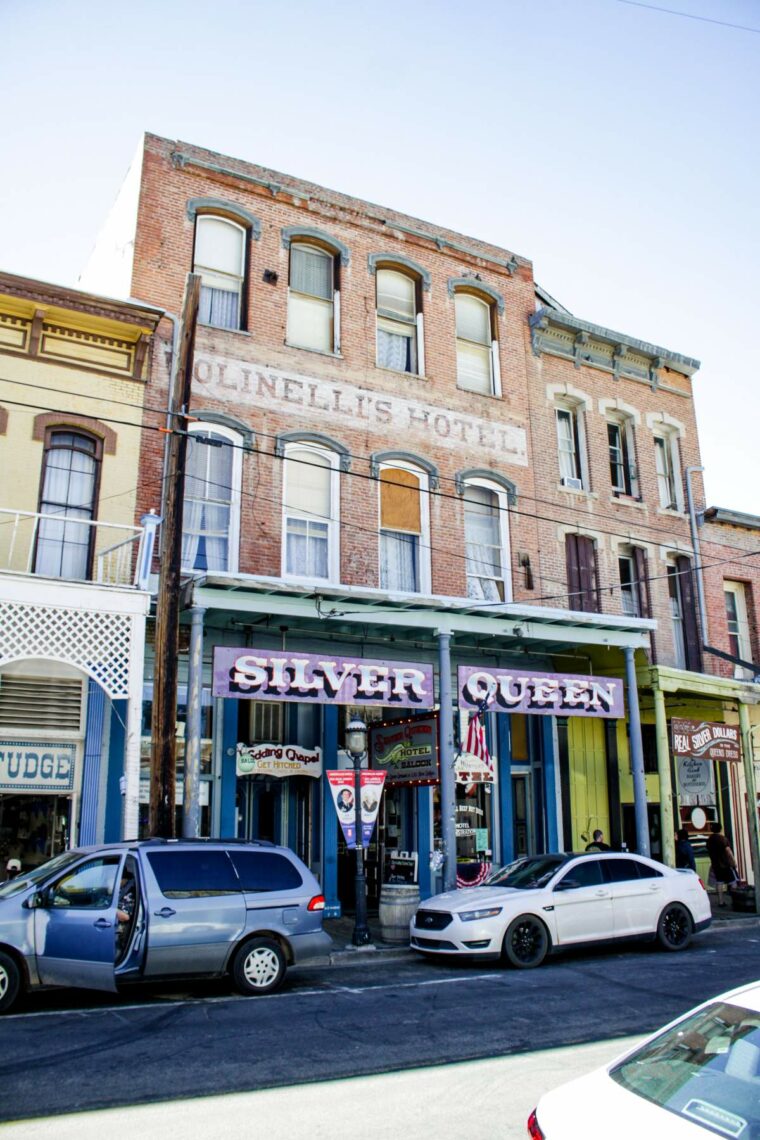
The Territorial Enterprise building claims to be “Where Mark Twain got his start,” another connection to the famed author. The Territorial Enterprise was the newspaper that Twain worked for in Virginia City and where he developed his writing style. However this was another building that was built after the Great Fire of 1875, so any physical connection to Mark Twain should be taken with a grain of salt. The actual building Mark Twain worked in has been lost to time and flames. The building and newspaper were owned in the 1950s by writer and socialite Lucius Beebe, who was never known to let the truth stand in the way of a good story (much like Twain himself). He opened the Mark Twain Museum in the building, fully capitalizing on the myth of Mark Twain. The building and museum have remained open on and off over the decades, though they’re currently closed to the public.
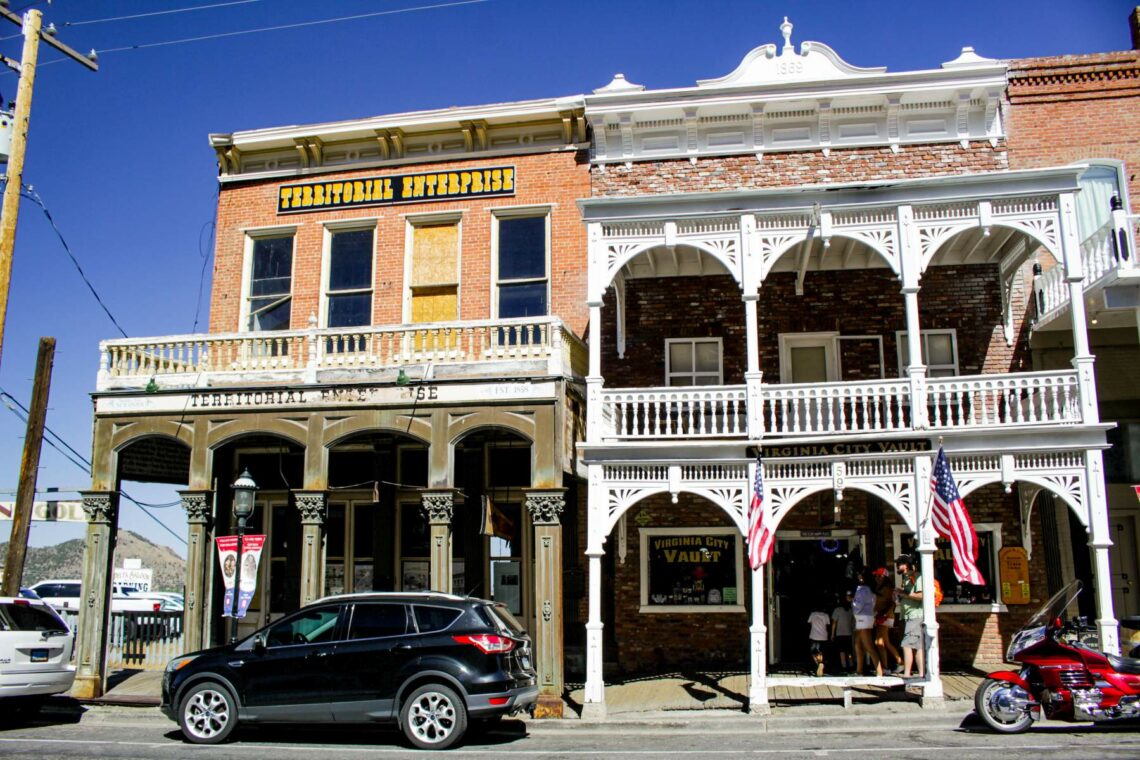
Another view of the Territorial Enterprise building, taken before Beebe arrived and put up the signs, helpfully draws an arrow for the reader to know which building is which. This postcard also shows the building to the left of the Territorial Enterprise, which had been demolished by the 1950s. But if you notice, the decorated columns surrounding the doors of that doomed building survive today. They were moved to support the balcony of the Territorial Enterprise.
